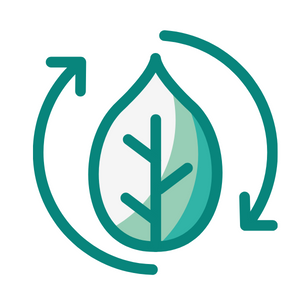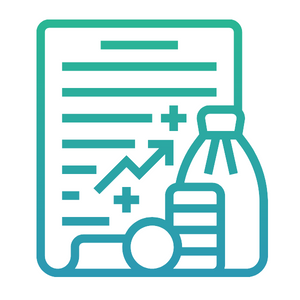By Kate Burrows, Managing Director, Tender Training College
 Many of my tendering clients, particularly small to medium-sized enterprises (SMEs), are struggling with how to meet social procurement targets and respond effectively to these questions in tenders.
Many of my tendering clients, particularly small to medium-sized enterprises (SMEs), are struggling with how to meet social procurement targets and respond effectively to these questions in tenders.
Social procurement is now a common feature of almost all government tenders and often a highly weighted component in the evaluation. It follows the development of social procurement as an international standard (ISO 20400:2017) to integrate sustainability and transparency into the procurement process.
What is social procurement?
The Queensland Government defines social procurement as: Using the government’s purchasing power to generate social benefits, adding value to procurement outcomes and supporting supplier and workforce diversity.
Governments at all levels have specific targets and objectives that influence their respective social procurement requirements. These aim to be proportionate to the size and value of the contract being tendered.
These objectives focus on inclusion and equity in the supply chain and the workplace, promoting opportunities for disadvantaged individuals, groups and communities. This could include First Nations Australians, SMEs, local and regional businesses, people with disability, long-term unemployed, disadvantaged youth, and refugees, and supporting the safety and equality of women.
Generally, the social procurement questions in tenders are focused on how respondents will deliver their own social value through economic development, positive social outcomes and sustainability over the contract term. Basically, how are you going to make the world a better place for everyone through your buying power.
What does ‘good’ look like’?
I’ve had recent experience answering social procurement questions on a number of complex and high-value projects. It can be challenging even for businesses that have mature social procurement policies, initiatives and resources to know the best approach to meet the government targets and objectives.
This is particularly so for SMEs. There is limited information or guidance available to small business on what best practice is, or what good looks like in social procurement – and how they achieve the outcomes required.
And it is somewhat ironic that social procurement policies are designed to support SMEs and regional businesses on one hand, while also making it challenging for them to effectively improve their own outcomes at the same time.

It requires companies to re-think the way they do business and their corporate social responsibility approach for the long-term, as this is very much ‘business as usual’ from hereon in. For example, companies might need to review their practices regarding:
- Who they employ
- How they recruit
- How they spend money
- What they purchase and who they purchase from
- Which organisations they support.
Importantly, companies also need to be able to effectively measure their actions in terms of the social benefits they produce.
Suggestions and tips to improve social outcomes
When responding to a government tender, visit the client’s procurement website for specific guidance about its social procurement objectives. This will give you an understanding of what it is looking for in its tender responses.
The following are ideas I’ve taken from various government websites, along with my own recent experience, for how to improve your social and sustainability outcomes. Note, this isn’t a ‘one-size-fits-all’ approach – you need to apply what is relevant for the tenders you complete.
1. Demonstrate organisational commitment and action
This could be in the form of targets, plans, policies and practices, including:
- A Reconciliation Action Plan for how you will employ First Nations Australians and purchase from businesses owned by First Nations Australians.
- A diversity and inclusion policy/strategy for fair, inclusive and equitable employment.
- Ensuring compliance with the Modern Slavery Act.
- Performance standards and targets for social positive outcomes, and a measurement system.
- Have staff volunteer at social enterprises or provide pro bono services for not-for-profits.
- Partner or joint venture with a business owned by First Nations Australians or an Australian Disability Enterprise.
- Provide sponsorship for events, teams, schools, groups and/or companies that are a social enterprise or deliver a positive social benefit.
Tip: You can engage Reconciliation Australia to help develop your RAP – https://rap.reconciliation.org.au/s/
2. Develop sustainable procurement guidelines
These should aim to:
- Source goods and services from ethical and environmentally sustainable sources that comply with industrial relations laws and promote secure employment.
- Prioritise goods and services from local and regional SMEs, businesses owned by First Nations Australians, social enterprises or Australian Disability Enterprises. As well as larger suppliers, think about the small entities that do your office cleaning, catering or landscaping, for example.
- Implement quick payment policies for SMEs in line with the Business Council of Australia’s Supplier Code.
Tip: During a tender, seek information from your supply chain about its ability to contribute to your social procurement requirements if you win the contract. This will help you meet the targets required.
3. Join networks and industry peak bodies, and employ intermediaries
These include organisations that can help with employment and supply chain outcomes, such as:
- Australian Network on Disability
- Employment Service Providers
- Disability Employment Service

- National Disability Services – BuyAbility
- Social Traders
- Social Ventures Australia
- Supply Nation
- Industry Capability Network
- Business chambers (First Nations and otherwise).
Tip: Employment Service Providers are located across Australia (including in regional areas) and help businesses to connect with vulnerable jobseekers. They provide a range of support services to help achieve sustainable employment outcomes for all parties.
4. Promote employment, education and training opportunities
These may include direct and indirect opportunities through your business or your supply chain. Consider work experience, training, mentoring, pre-employment programs, traineeships, apprenticeships, and graduate and scholarship programs for First Nations Australians, local and regional businesses, SMEs, people with disability, long-term unemployed, disadvantaged youth, refugees and women.
Tip: Consider cultural awareness training and disability confidence training for your employees to help with sustainable employment outcomes.
5. Sustainability and environment initiatives
These may include:
- Reduce office energy consumption
- Use video conferencing to reduce flights and commuting
- Increase use of non-toxic materials
- Encourage flexible working to reduce office footprint

- Bicycle storage facilities and or assist employees to buy bicycles
- Reimbursement of public transport fares
- Carbon neutral status by offsetting activities.
Tip: There are a number of organisations that will help you to measure your footprint, and reduce and offset your emissions.
If you need assistance to improve your social procurement outcomes relating to tenders, please contact me on kate@tendertrainingcollege.com.au, or 1300 414 000.




 anagement plans are by nature formal documents. They often form part of an organisation’s quality or overarching management system, and therefore are generally similar in appearance.
anagement plans are by nature formal documents. They often form part of an organisation’s quality or overarching management system, and therefore are generally similar in appearance.

